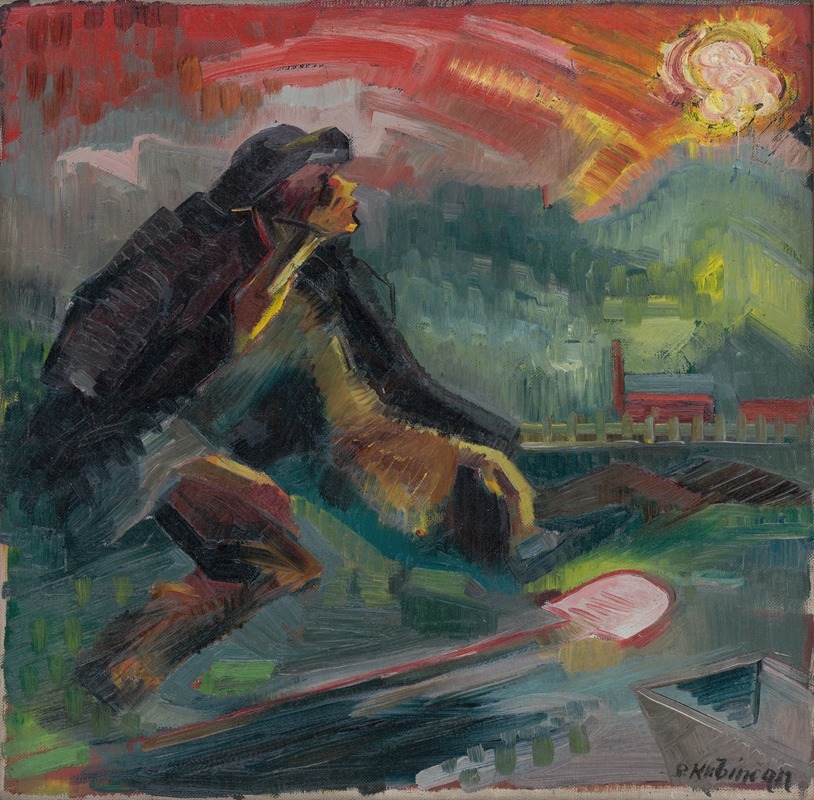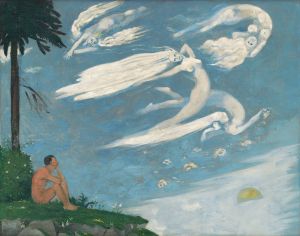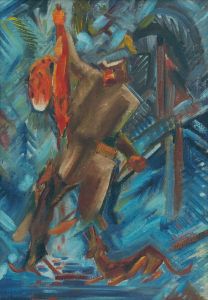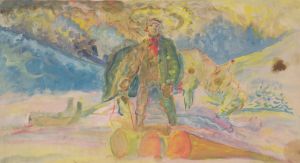
Dawn
A hand-painted replica of Arnold Peter Weisz-Kubínčan’s masterpiece Dawn, meticulously crafted by professional artists to capture the true essence of the original. Each piece is created with museum-quality canvas and rare mineral pigments, carefully painted by experienced artists with delicate brushstrokes and rich, layered colors to perfectly recreate the texture of the original artwork. Unlike machine-printed reproductions, this hand-painted version brings the painting to life, infused with the artist’s emotions and skill in every stroke. Whether for personal collection or home decoration, it instantly elevates the artistic atmosphere of any space.
Arnold Peter Weisz-Kubínčan was a Slovak painter known for his unique contributions to modern art in the early 20th century. His work, "Dawn," is one of the pieces that exemplifies his artistic style and thematic focus. Although specific details about the painting "Dawn" are limited, Weisz-Kubínčan's broader body of work provides context for understanding his artistic approach and the cultural environment in which he created.
Weisz-Kubínčan was born in 1898 in the town of Dolný Kubín, which was then part of the Austro-Hungarian Empire and is now located in Slovakia. He studied art in Budapest and later in Vienna, where he was influenced by the modernist movements of the time, including Expressionism and Cubism. These influences are evident in his work, which often features bold colors, dynamic compositions, and a focus on emotional expression.
"Dawn," like many of Weisz-Kubínčan's works, likely reflects his interest in capturing the essence of human experience and the natural world. His paintings often explore themes of transformation and renewal, which are commonly associated with the concept of dawn. The use of color and form in his work suggests a desire to convey the emotional and spiritual dimensions of these themes.
Weisz-Kubínčan's career was tragically cut short by the events of World War II. As a Jewish artist living in Slovakia during the rise of Nazism, he faced increasing persecution. In 1944, he was deported to a concentration camp, where he ultimately perished. Despite his untimely death, Weisz-Kubínčan left behind a significant body of work that continues to be studied and appreciated for its artistic and historical value.
The legacy of Arnold Peter Weisz-Kubínčan and his painting "Dawn" is preserved through exhibitions and collections that highlight his contributions to Slovak and European art. His work is characterized by a deep sensitivity to the human condition and a mastery of modernist techniques, making him a notable figure in the history of 20th-century art.
While specific information about "Dawn" is scarce, the painting can be appreciated within the broader context of Weisz-Kubínčan's oeuvre. His ability to blend personal expression with universal themes allows his work to resonate with audiences even today. Through his art, Weisz-Kubínčan offers a poignant reminder of the resilience of the human spirit in the face of adversity, a theme that is as relevant now as it was during his lifetime.


















